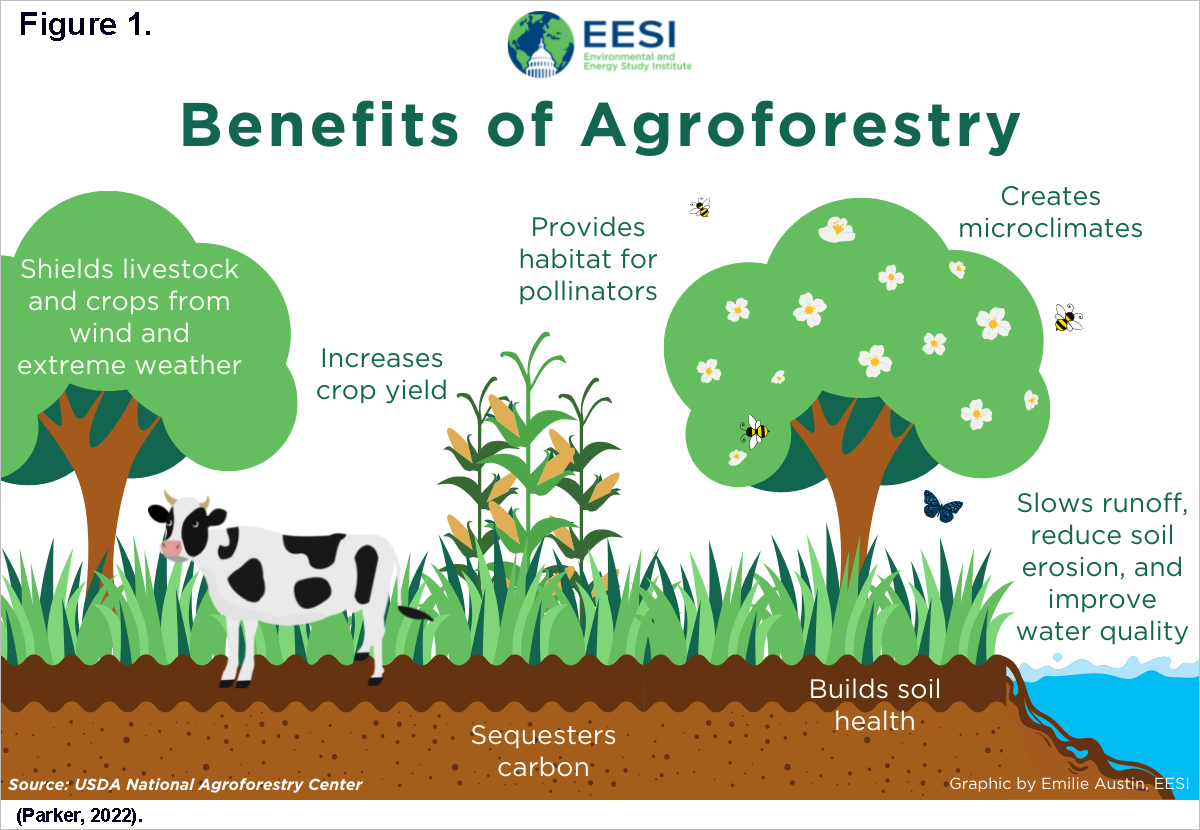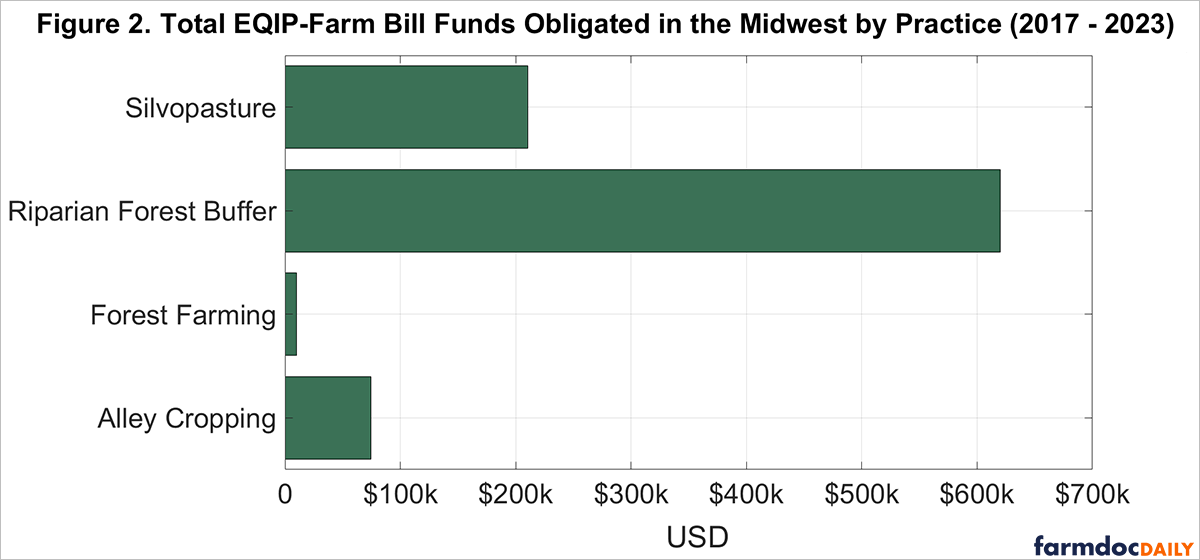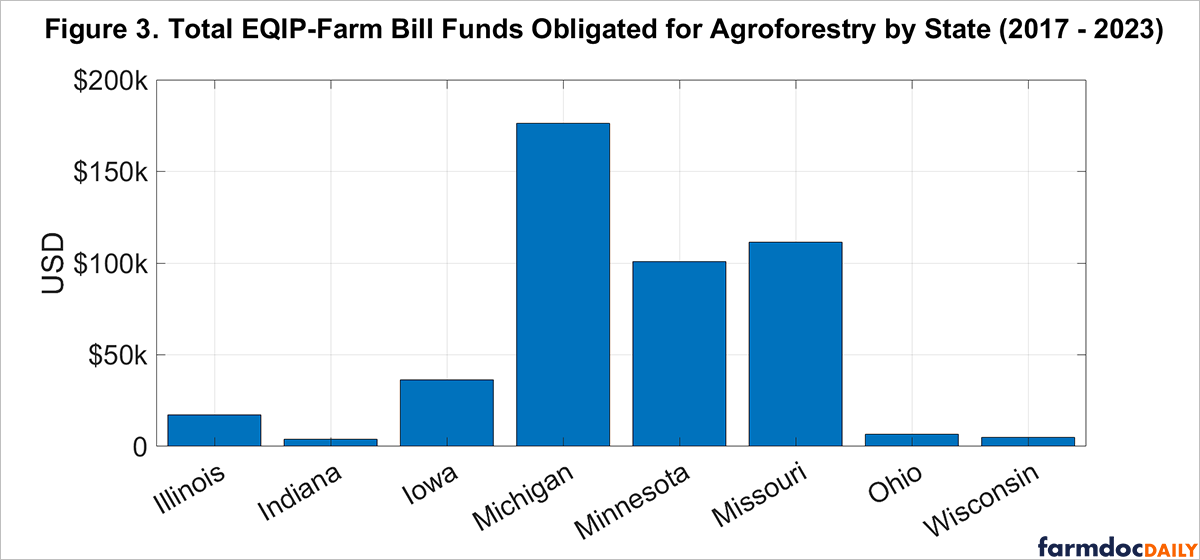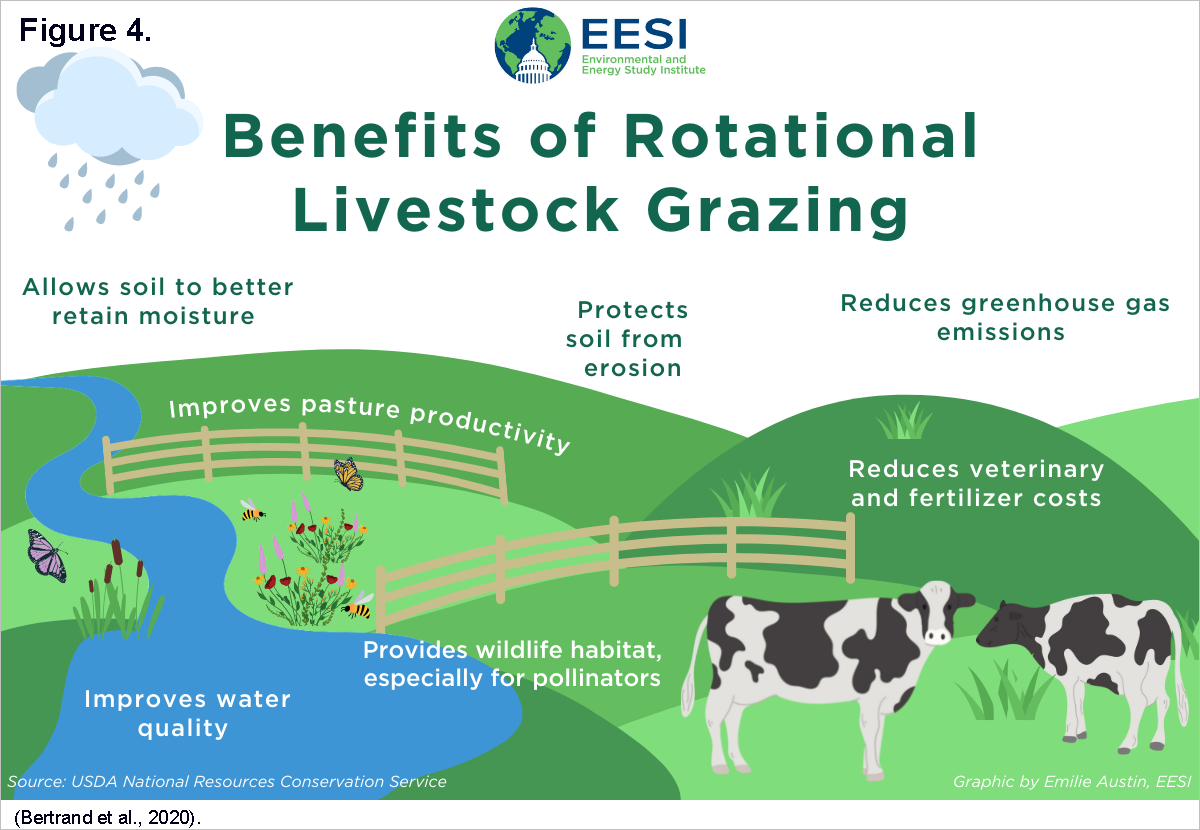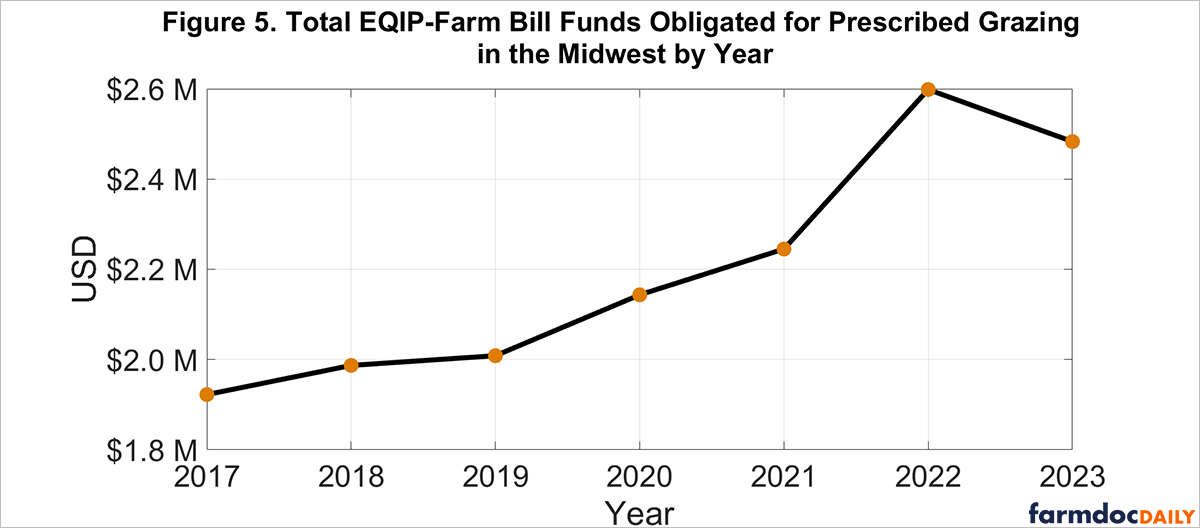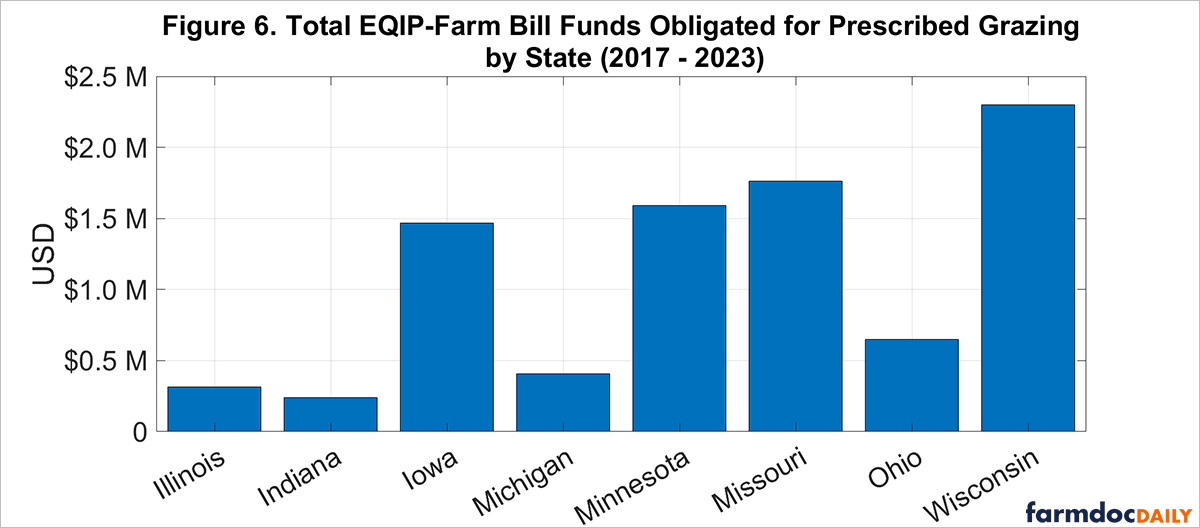What is Climate Smart Agriculture?
Introduction
As the United States agricultural system faces the challenges of feeding a growing population, adapting to climate change, and reducing environmental consequences, the concept of climate-smart agriculture (CSA) was established as a comprehensive strategy to help address these issues. However, no standardized framework exists to assess if CSA practices produce the desired benefits. This article calls for developing a consistent, widely applicable, and standardized framework to assess what makes a specific agricultural system or practice “climate-smart” and analyzes agroforestry and prescribed grazing within said framework.
Background
Climate change and food insecurity are two complicated and interconnected challenges that the world must address. With global population projected to reach 9.7 billion by 2050, there is increasing pressure on production agriculture and supply chain management to reduce food insecurity (Food and Agricultural Organization of the United Nations [FAO], 2013). This challenge is made more difficult by global climate change, driven by increasing anthropogenic greenhouse gas (GhG) concentrations, of which a significant proportion are attributable to agriculture (Environmental Protection Agency, 2024). Therefore, a heightened focus on sustainable agriculture systems is necessary to guarantee food security, improve environmental health, and respond to climate change; the concept of CSA intends to contribute to addressing this ultimate challenge.
Agricultural systems and practices referred to as CSA are assumed to address at least two of the interconnected challenges of feeding a growing population, adapting to climate change, and reducing environmental harm (The World Bank, 2024). However, the lack of a standardized framework to assess if CSA practices produce their desired benefits promotes an environment where the term CSA can be arbitrarily applied to any agricultural system or practice assumed to have a production, environmental, or climate benefit. For example, in 2024 the USDA added 15 practices to its climate-smart conservation list eligible for Environmental Quality Incentives Program (EQIP) funding, but many likely lack tangible climate benefits (Schechinger, 2024). To ensure the paradigm of CSA truly produces the tangible benefits needed to address food insecurity, environmental sustainability, and climate change, a standardized framework supported by global agricultural organizations should be adopted.
Toward a Climate Smart Agriculture Framework
Many organizations have broadly defined CSA, including the World Bank, the FAO, and the United States Department of Agriculture (USDA). These definitions are connected by the central tenets of (1) increasing agricultural productivity, (2) enhancing agricultural resilience, and (3) reducing GhG emissions (The World Bank, 2024; FAO, 2024; USDA Northeast Climate Hub, n.d.).
Despite the agreement between agricultural organizations on the broad pillars of CSA, no standardized framework exists to assess if practices or technologies identified as “climate-smart” produce the desired benefits as defined by the framework. A standardized framework would provide a common set of criteria for evaluating the climate-smart attributes of agricultural practices in different regions. A standardized framework would also enable producers, policymakers, and researchers to consistently compare the effectiveness, tradeoffs, and implementation barriers of various CSA systems and practices. The framework will result in improved implementation of CSA goals, better policy development, and more informed decision-making processes on a national scale.
Furthermore, it is difficult to effectively allocate resources without a clear assessment of how a system or practice is identified as “climate-smart” or to what degree it produces tangible “climate-smart” benefits. To maximize resource allocation, the USDA, producers, policymakers, researchers, and other interest groups must fully understand and consider the benefits, costs, and uncertainties of CSA practices. This article subsequently provides examples of such an assessment using examples of agroforestry and prescribed grazing systems, which are often referred to as “climate smart.”
Agroforestry Discussion
When analyzing agroforestry systems and its five practices (alley cropping, riparian forest buffers, silvopasture, windbreaks, and forest farming) through the three-pillar CSA framework, strong scientific evidence supports that the system increases productivity, enhances adaptation, and reduces emissions (USDA National Agroforestry Center, n.d.a). When properly implemented and managed, agroforestry systems simultaneously address the “production needs of farmers and land-owners while providing environmental benefits to society” (Bishaw et al., 2022).
Each agroforestry practice has its own set of advantages and complexities (USDA National Agroforestry Center, n.d.a). For example, alley cropping can support soil stabilization, bioremediation, and biodiversity, which are important for climate change adaptation and emission reduction (Udawatta et al., 2014); however, root competition with grain or horticulture crops may hinder production benefits (Garrett et al., 2022). Riparian forest buffers are effective at helping farmers to become more resilient by improving water quality and reducing farm runoff, but productivity and emission benefits are not well known (Schultz et al., 2004; Effert-Fanta et al., 2019). Silvopasture can reduce methane emissions, but more research is needed to optimize adaptation and production benefits (Pent, 2020; Jose & Dollinger, 2019). Windbreaks excel at protecting crops and enhancing productivity, but may cause plants to become less drought-resilient (Ballesteros-Possu, et al., 2017; Smith, et al., 2021). Forest farming provides farmers with additional products and income, but adaptation and emission reduction benefits are unclear (Baker & Saha, 2016; Trozzo et al., 2021).
The production pillar of the CSA framework comprises the agronomic production of the system or practice and its economic feasibility. Research supports the economic resilience of agroforestry systems in the Midwest relative to a traditional maize-soybean rotation (Wolz & DeLucia, 2018). Agroforestry is also supported by various Natural Resource Conservation Service (NRCS) implementation incentives through EQIP (USDA National Agroforestry Center, n.d.b). Across the Midwest, between 2017 and 2023, approximately $900,000 of EQIP-Farm Bill funds were invested in agroforestry practices (USDA NRCS, 2024). Figures 2 and 3 below show a further breakdown of how and where the funds were allocated. A standardized CSA framework will help these funds be distributed as efficiently as possible.
However, challenges and tradeoffs exist with agroforestry, including potential resource competition between trees and crops, variability in environmental services provided, and the need for comprehensive research on GhG sequestration and legacy (Garrett et al., 2022). While some uncertainties and limitations persist, the overall positive effects of agroforestry on enhancing farm resilience make it a promising CSA candidate. As the Midwest recognizes the viability of these practices, addressing challenges and conducting further research will be crucial for optimizing the benefits of agroforestry in the region. By using the unique advantages of each agroforestry practice and addressing their respective limitations, stakeholders can collaborate toward building resilient and sustainable agricultural systems that proactively address climate change, while enhancing productivity and environmental stewardship.
Prescribed Grazing Discussion
The three-pillar framework is also applied to prescribed grazing, where livestock from several herds are combined and rotated among different pastures to provide a “rest period for the pastures when the cattle are in a different pasture” (USDA NRCS, n.d.a). Prescribed grazing involves “multiple human dimensions as well as complex ecological processes” with the goal to support “ecosystem sustainability and restore degraded ecosystems” (Briske, 2011).
In the context of the three-pillar framework, the CSA benefits of prescribed grazing are less clear than for agroforestry. In terms of productivity benefits, there is an absence of strong evidence describing how prescribed grazing can improve forage quality and quantity, thereby improving animal health, resilience, and productivity (Nelson, 2012).
Regarding the second CSA pillar of enhanced resilience, the USDA prescribed grazing management objectives of improving biodiversity, soil health, and water quality are analyzed (USDA NRCS, n.d.b). For example, additional research regarding wildlife responses to prescribed grazing is needed in developing countries because wildlife effects widely vary depending on the species (Schieltz & Rubenstein, 2016). Likewise, more studies are needed to assess plant communities’ responses to prescribed grazing and understand long-term ecological outcomes and benefits (Russell & Bisinger, 2015). Furthermore, the relationship between grazing management and soil health is limited by a lack of scientific evidence (Derner et al., 2018). Using prescribed grazing to manage fine fuel loads is not a clear-cut tool, as weather and site conditions complicate this relationship (Briske, 2011). Finally, the most transparent relationship exists between riparian and watershed quality and reduced livestock grazing; however, additional research is still needed to specify the effects of prescribed grazing on riparian areas (Krall & Roni, 2022).
Although the USDA does not list GhG emissions reductions as a prescribed grazing management objective, some literature suggests that prescribed grazing can reduce atmospheric GhG concentrations through increased carbon and methane sequestration (USDA NRCS, n.d.b). For example, the FAO claims that improving grazing management can increase soil carbon stocks and sequestration (FAO, 2013). Researchers from Colorado State University performed a synthesis of hundreds of studies and concluded that “management practices introduced intending to increase forage production tend to lead to increases in soil C stocks” (Conant et al., 2017). Therefore, it is evident that prescribed grazing has some quantifiable indirect emission reduction capabilities through carbon sequestration; however, more research is needed to better quantify these benefits and link the potential emissions reduction benefits of prescribed grazing to the USDA-defined management objectives.
Across the Midwest, between 2017 and 2023, approximately $17.5 million of EQIP-Farm Bill funds were allocated to prescribed grazing (USDA NRCS, 2024). This large investment highlights the regional applicability of prescribed grazing practices in the Midwest. Figures 5 and 6 below show a further breakdown of how and where the funds were allocated.
While prescribed grazing offers many benefits, there is substantial uncertainty in its effectiveness in achieving CSA objectives (Nelson, 2012). Further research is needed to better understand the production, resilience, and emissions benefits of prescribed grazing and help clarify its role in CSA. Overall, prescribed grazing has the potential to reduce environmental impacts from the livestock sector, but the scientific literature does not adequately support the assumptions of prescribed grazing management objectives as CSA.
Conclusion
CSA is a promising paradigm for addressing environmental challenges by increasing productivity, enhancing resilience, and reducing emissions. However, the definition and assessment of CSA practices lack standardization, hindering their widespread adoption and effective implementation. Developing a standardized CSA framework for assessing systems and practices is crucial for evaluating their effectiveness, comparing different approaches, and guiding decision-making processes and resource allocation. The Growing Climate Solutions Act (GCSA) and the Inflation Reduction Act (IRA) gives the USDA some authority to govern the CSA framework; however further development is needed to create a common criterion for stakeholders to assess the climate-smart attributes of agricultural systems and practices (GCSA, 2021; IRA 2022).
By applying the consistent three-pillar framework, we can better understand the potential of CSA practices in addressing climate change and promoting sustainable agriculture. Our initial assessment revealed that a significant body of scientific research supports that agroforestry accomplishes many of the CSA goals when properly implemented and managed; however, the benefits of prescribed grazing lack scientific consensus and require further research. It is important to note that for both agroforestry and prescribed grazing, the effectiveness of the systems is dependent on site-specific conditions and management.
In conclusion, a consistent, widely applicable, and standardized framework for assessing CSA will facilitate informed decision-making, improve resource allocation, and enhance stakeholder collaboration. By promoting the adoption of CSA practices, the United States can move closer to achieving environmental and food security goals in a changing climate. It is recommended that this framework is continually developed and used as a model for the USDA, producers, and researchers to assess agricultural systems, practices, and technologies to determine if they qualify as “climate-smart.”
References
Baker, E., & Saha, S. (2018, April 14). Forest farming in Georgia, United States: Three potential crops. Annals of Agrarian Science, 16(3), 304–308. https://doi.org/10.1016/j.aasci.2018.04.003
Ballesteros-Possu, W., Brandle, J., & Schoeneberger, M. (2017, April 26). Potential of windbreak trees to reduce carbon emissions by agricultural operations in the US. Forests, 8(5), 138. https://doi.org/10.3390/f8050138
Bishaw, B., Soolanayakanahally, R., Karki, U., & Hagan, E. (2022, March 17). Agroforestry for sustainable production and resilient landscapes. Agroforestry Systems, 96(3), 447–451. https://doi.org/10.1007/s10457-022-00737-8
Bertrand, S., Roberts, A. S., & Walker, E. (2020, May 3). The Climate and Economic Benefits of Rotational Livestock Grazing. https://www.eesi.org/articles/view/the-climate-and-economic-benefits-of-rotational-livestock-grazing
Briske, D.D. [ed]. 2011. Conservation Benefits of Rangeland Practices: Assessment, Recommendations, and Knowledge Gaps. United States Department of Agriculture, Natural Resources Conservation Service. https://www.nrcs.usda.gov/wps/cmis_proxy/https/ecm.nrcs.usda.gov%3A443/fncmis/resources/WEBP/ContentStream/idd_60378378-0000-CA16-8392-8B6D6B084DFF/0/Conservation+Benefits+of+Rangeland+Practices.pdf
Derner, J. D., Smart, A. J., Toombs, T. P., Larsen, D., McCulley, R. L., Goodwin, J., Sims, S., & Roche, L. M. (2018). Soil Health as a transformational change agent for US Grazing Lands Management. Rangeland Ecology & Management, 71(4), 403–408. https://doi.org/10.1016/j.rama.2018.03.007
Conant, R. T., Cerri, C. E., Osborne, B. B., & Paustian, K. (2017, November 1). Grassland management impacts on soil carbon stocks: A new synthesis. Ecological Applications, 27(2), 662–668. https://doi.org/10.1002/eap.1473
Effert-Fanta, E. L., Fischer, R. U., & Wahl, D. H. (2019, July 2). Effects of riparian forest buffers and agricultural land use on macroinvertebrate and Fish Community Structure. Hydrobiologia, 841(1), 45–64. https://doi.org/10.1007/s10750-019-04006-1
Environmental Protection Agency. (2024, June 5). Sources of Greenhouse Gas Emissions. United States Environmental Protection Agency. https://www.epa.gov/ghgemissions/sources-greenhouse-gas-emissions
Food and Agricultural Organization of the United Nations (2013). Climate-Smart Agriculture Sourcebook. United Nations.https://www.fao.org/climate-smart-agriculture-sourcebook/en/
Food and Agriculture Organization of the United Nations. (2024). Climate-Smart Agriculture. Retrieved 2024, April 23, from https://www.fao.org/climate-smart-agriculture/en/
Garrett, Harold. E., Jose, S., & Gold, M. A. (2022). North American Agroforestry. Wiley. https://www.wiley.com/en-us/North+American+Agroforestry%2C+3rd+Edition-p-9780891183778
Growing Climate Solutions Act of 2021, Publ. L. No 117-27. Stat. 1251 (2021). https://www.congress.gov/bill/117th-congress/senate-bill/1251
Inflation Reduction Act of 2022, Public Law No: 117-169. https://www.congress.gov/bill/117th-congress/house-bill/5376/text
Krall, M., & Roni, P. (2022, November 23). Effects of livestock exclusion on stream habitat and aquatic biota: A review and recommendations for implementation and monitoring. North American Journal of Fisheries Management, 43(2), 476–504. https://doi.org/10.1002/nafm.10863
Jose, S., & Dollinger, J. (2019, February 7). Silvopasture: A sustainable livestock production system. Agroforestry Systems, 93(1), 1–9. https://doi.org/10.1007/s10457-019-00366-8
Nelson, C.J. (ed.) 2012. Conservation Outcomes from Pastureland and Hayland Practices: Assessment, Recommendations, and Knowledge Gaps. Allen Press, Lawrence, Kansas. https://nrcs.usda.gov/publications/ceap-GrazingLands-2012-ConservationOutcomesPasturelandHaylandPractices.pdf
Parker, G. (2022, June 2). Q&A: How the Savanna Institute is Helping Agroforestry Thrive in the Midwest. Environmental and Energy Study Institute. Retrieved 2024, April 23, from https://www.eesi.org/articles/view/qa-how-the-savanna-institute-is-helping-agroforestry-thrive-in-the-midwest
Pent, G. J. (2020, April 27). Over-yielding in temperate silvopastures: A meta-analysis. Agroforestry Systems, 94(5), 1741–1758. https://doi.org/10.1007/s10457-020-00494-6
Russell, J. R., & Bisinger, J. J. (2015, February 19). Forages and pastures symposium: Improving soil health and productivity on grasslands using managed grazing of livestock. Journal of Animal Science, 93(6), 2626–2640. https://doi.org/10.2527/jas.2014-8787
Schechinger, A. (2024, February 28). Many newly labeled USDA climate-smart conservation practices lack climate benefits. Environmental Working Group. https://www.ewg.org/research/many-newly-labeled-usda-climate-smart-conservation-practices-lack-climate-benefits
Schieltz, J. M., & Rubenstein, D. I. (2016, November 11). Evidence based review: Positive versus negative effects of livestock grazing on wildlife. what do we really know? Environmental Research Letters, 11(11), 113003. https://doi.org/10.1088/1748-9326/11/11/113003
Schultz, R. C., Isenhart, T. M., Simpkins, W. W., & Colletti, J. P. (2004, July). Riparian forest buffers in agroecosystems – lessons learned from the Bear Creek watershed, Central Iowa, USA. Agroforestry Systems, 61–62(1–3), 35–50. https://doi.org/10.1023/b:agfo.0000028988.67721.4d
Smith, M. M., Bentrup, G., Kellerman, T., MacFarland, K., Straight, R., Ameyaw, Lord, & Stein, S. (2021, December 11). Silvopasture in the USA: A systematic review of Natural Resource Professional and producer-reported benefits, challenges, and Management Activities. Agriculture, Ecosystems & Environment; Environment, 326, 107818. https://doi.org/10.1016/j.agee.2021.107818
The World Bank. (2024, February 26). Climate-Smart Agriculture. https://www.worldbank.org/en/topic/climate-smart-agriculture
Trozzo, K. E., Munsell, J. F., Chamberlain, J. L., Gold, M. A., & Niewolny, K. L. (2021, May 6). Forest farming: Who wants in? Journal of Forestry, 119(5), 478–492. https://doi.org/10.1093/jofore/fvab023
Udawatta, R. P., Kremer, R. J., Nelson, K. A., Jose, S., & Bardhan, S. (2014, September 14). Soil quality of a mature alley cropping agroforestry system in temperate North America. Communications in Soil Science and Plant Analysis, 45(19), 2539–2551. https://doi.org/10.1080/00103624.2014.932376
United States Department of Agriculture National Agroforestry Center (n.d.a). Agroforestry Practices. United States Department of Agriculture United States Forest Service. Retrieved 2024, April 23, from https://www.fs.usda.gov/nac/practices/index.shtml
United States Department of Agriculture National Agroforestry Center. (n.d.b). NRCS Conservation Practice Standards for Agroforestry. United States Department of Agriculture United States Forest Service. Retrieved 2024, April 23, from https://www.fs.usda.gov/nac/practices/conservation-practice-standards.shtml
United States Department of Agriculture United States Northeast Climate Hub. (n.d.). The role of Climate-Smart Agriculture in climate adaptation and mitigation in the Northeast. USDA Climate Hubs. Retrieved 2024, April 23, from https://www.climatehubs.usda.gov/hubs/northeast/topic/role-climate-smart-agriculture-climate-adaptation-and-mitigation-northeast
United States Department of Agriculture Natural Resource Conservation Service Financial Assistance Program Data Download. (2024, April 1). Farmers.gov. Retrieved 2024, July 2, from https://www.farmers.gov/data/financial-assistance-download
United States Department of Agriculture Natural Resources Conservation Service. (n.d.a). Grazing in Illinois. Retrieved 2024, April 23, from https://www.nrcs.usda.gov/conservation-basics/conservation-by-state/illinois/grazing-in-illinois#education
United States Department of Agriculture Natural Resources Conservation Service. (n.d.b). Prescribed grazing (ac.) (528) conservation practice standard. United States Department of Agriculture Natural Resources Conservation Service. Retrieved 2024, April 23, from https://www.nrcs.usda.gov/resources/guides-and-instructions/prescribed-grazing-ac-528-conservation-practice-standard
Wolz, K. J., & DeLucia, E. H. (2018, November 9). Black Walnut Alley cropping is economically competitive with row crops in the Midwest. Ecological Applications, 29(1). https://doi.org/10.1002/eap.1829
Disclaimer: We request all readers, electronic media and others follow our citation guidelines when re-posting articles from farmdoc daily. Guidelines are available here. The farmdoc daily website falls under University of Illinois copyright and intellectual property rights. For a detailed statement, please see the University of Illinois Copyright Information and Policies here.








